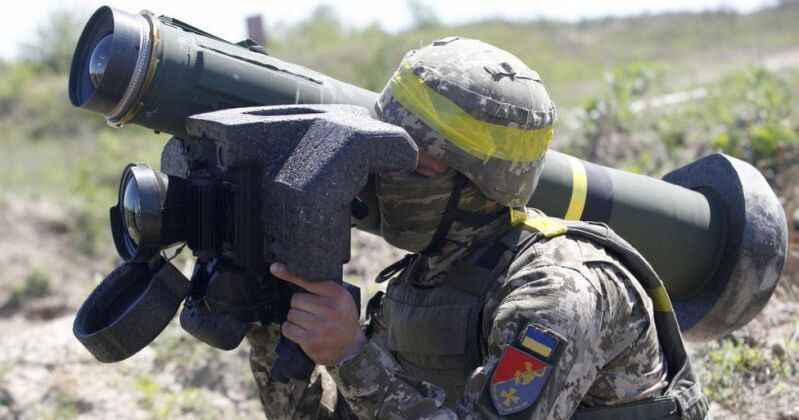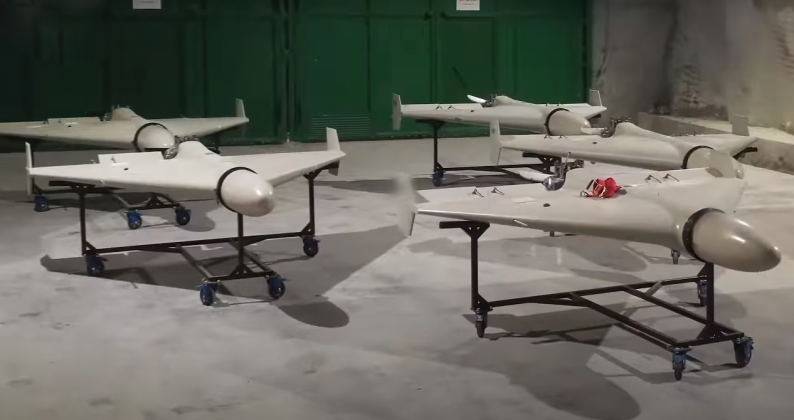Since the outbreak of the Russian-Ukrainian War in February Iran and the United States have emerged as the principal external arms suppliers of the two respective sides, with American arms transfers to Ukrainian government forces having begun in the mid 2010s while Iranian weapons began to appear in the Russian inventory much more recently in September. Following significant battlefield gains by the Ukrainian ground forces, but amid signs that Russia could be joined in its campaign by neighbouring Belarus on Ukraine’s northern border, the Washington has indicated that it is set to reduce its arms supplies to Kiev in what may be an effort by the U.S. to deescalate the conflict. This was signalled by Defence Secretary Lloyd Austin, with concerns that American stockpiles for advanced weapons had been excessively depleted by transfers to Ukraine being a major factor. Analysts have widely predicted as a result that shipments of HIMARS rocket artillery systems, M777 Howtizers, Javelin and Stinger handheld missiles, among other assets which had been key to bolstering Kiev’s war effort, would diminish significantly. Reports that large portions of supplies have ended up on black markets after reaching Ukraine, rather than with personnel on the frontlines, has been speculated to be a contributing factor to American reluctance to supply more.

Speaking regarding growing limitations on America’s ability to supply Ukraine, senior adviser at the Center for Strategic & International Studies and veteran procurement expert at the Office of Management and Budget, Mark Cancian, was among those to conclude that supplies of such systems were “limited” supplies of HIMARs, Javelins, Stingers and M777 Howitzers. “There are some areas where we’re basically at the bottom of the barrel,” he added, highlighting that it was likely the U.S. would instead begin to furnish Ukraine with lower end substitutes. “It confirmed what I believe, that we will continue support Ukraine, but we’re going to have to do it in different ways, like providing substitutes, or we might have to buy stuff from other people, or it will take longer… it won’t be quite the same,” he stated. Cancian was one of many to highlight that the rush by NATO member states to arm Ukraine resulted in a “petting zoo of NATO equipment” – with serious compatibility issues stemming from its fielding of small numbers of arms of different classes coming from many different countries.

While the United States is expected to stem the flow of top end weaponry to Ukrainian government forces, Russia has seen arms imports from Iran grow drastically as evidenced both by the growing presence Iranian drones have had on the battlefield and by the increase in flights of Iranian military transport aircraft into Russia. This first included the Shahed 136 loitering munition that appeared in Ukraine from September, and was followed by some higher end drone classes such as the Mohajer-6 – although top end Iranian aircraft such as the Shahed 191 stealth drone have yet to be seen. Iranian drones have emerged as Russia’s primary strike aircraft in the Ukrainian theatre, with Russia’s domestically produced manned combat aircraft such as the Su-34 being held back from flying into close range engagements to avoid enemy air defences. The Russian Air Force has also avoided expending too many standoff weapons from its fighters, as although these can be launched from far beyond the range of Ukrainian air defences they are highly costly and were only procured in limited numbers before the war began. With Iran having a massive drone fleet at its disposal and a very large productive capacity, these assets have provided a far more optimal means of carrying out air strikes in the theatre while Russia’s more expensive manned aircraft are conserved for a possible war with NATO.

A number of reports have indicated that Iran is set to supply Russia with ballistic missiles, with the country’s defence sector producing a much wider range of designs that Russia’s own including several short ranged and low cost missile classes such as the Fateh-110 and Fateh-313. These provide more expendable alternatives to Russia’s sole ground launched tactical ballistic missile class the Iskander. Iran built up a ballistic missile industry from the 1990s with North Korean support, and continues to rely heavily on Korean technologies in its industry with many of its designs being direct derivatives of Korean ones. A UN arms embargo on North Korea, however, has meant that Russia cannot legally purchase missiles from the country directly leaving Iran as its only option for supplies. The extent of Russia’s reliance on Iranian arms, which would have been wholly unthinkable before the 1990s when the Soviet Union had the world’s largest defence sector, has served to highlight the extent to which the Russian economy, R&D base and industrial base have declined.

It remains uncertain the extent to which Iranian and U.S. arms flows will play a role in determining the course of the Russian-Ukrainian War, but opposing trends from the two major suppliers has the potential to mark a turning point as both Russian and Ukrainian ground forces face growing fatigue. Regarding the change of course in Washington, criticisms of the Joe Biden administration for focusing foreign policy attentions on a relatively underdeveloped part of the world, and on Russia which is widely considered a declining power in the West, have resulted in considerable pressure to refocus attentions on conflict with China. After the Russian state absorbed four ethnically Russian majority Eastern Ukrainian regions, indicating that it would regard attacks on them as attacks on Russian territory thenceforth, some analysts in Washington also predicted a reduction in arms transfers to Kiev in order to avoid escalation against Moscow at a time when attentions needed to be focused on greater challenges to American power elsewhere. The extent to which the U.S. will reduce supplies, and the kinds of new Iranian assets that will be deployed, both remain to be seen.
